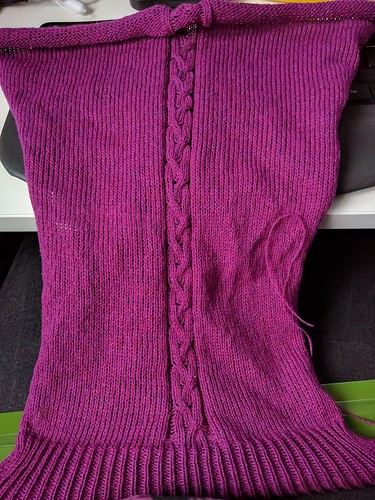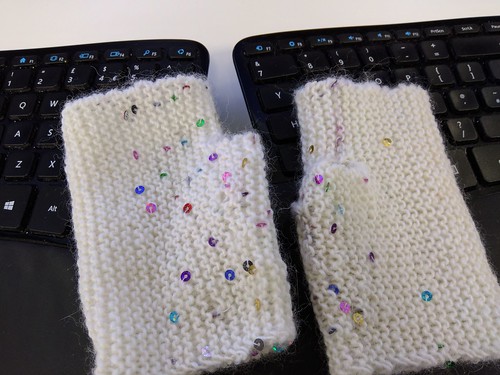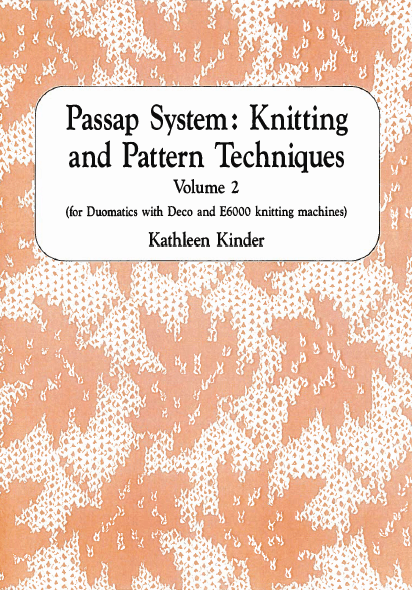Well, after an aborted attempt last night I got the first sleeve done, with (I thought!) no mistakes. Thanks to an ingenious suggestion from both a German and an American member of the Passap machine knitting group on Ravelry, I've now got a trick which makes working cables fool-proof. It's a hint that's so neat it's in the "why didn't I think of that?" category. When working a cable which alternates left or right, make the cross happen on an odd row, and cross towards the lock or carriage position. In this case, I did a left cross when the lock was on a row ending in 5 (lock on left), and a right cross when the lock was on a row ending in 0 (lock is on right). Lost track? Just look at where your lock is. Genius! Of course, as the increases are every 6 rows, it means a lot more stopping and starting, but never mind! An example of a lovely poncho was shared, which had a panel of about 10 cables up the front.
You noted I said I thought I'd made no mistakes? Well, on each cable row I brought an empty back bed needle into work, to add extra yarn for the cable cross. In most cases I remembered - but not always. My partner came in to talk to me and I missed one - and the yarn must have snapped. Luckily the stitches didn't get very far and it's been (almost invisibly) repaired with a length of yarn. Only another knitter might spot it, and I'm hoping that once the garment has been washed it'll disappear. It's lambswool so it will felt and become self-securing. Hopefully!
Maybe I should invest in a "do not disturb" sign - as the Cog was coming to tell me about his latest guitar pedal, it felt cruel to be rude! He'd ordered one via Amazon, which turned out to be faulty (it buzzed as soon as it was plugged in) and clearly it was not even brand new nor well-packed. The second one came from PMT in Birmingham, well-packed and worked immediately with no buzzing. He did make me chuckle, showed me a page with a guitarist's version of the engineering flow chart. "Is it buzzing? Yes? You are a bee!" I used to have a print of that flowchart on my desk, back when we still had places we could pin things.
The mood's apathetic. I'm trying to focus on staying positive and on things I can control. Little wins - watching good films and having laughs with my sweetie. Clearly I can't control how others behave at the moment, however much that might hurt me. We will all be changed by this I think. Let's hope it's for the better.
Current mood:  apathetic
apathetic


 okay
okay depressed
depressed confused
confused

 sad
sad







 busy
busy





 enthralled. Finally things are clicking with me and the Swiss Miss!
enthralled. Finally things are clicking with me and the Swiss Miss!